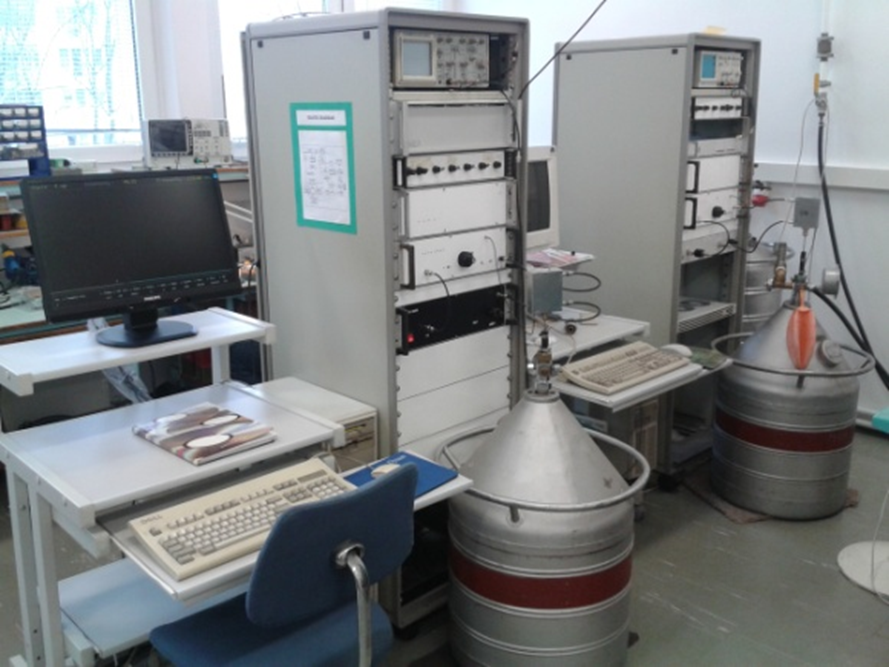

NMR spectrometers for magnetic materials | ||||
DescriptionNuclear Magnetic Resonance (NMR) consists in resonance absorption of phonons corresponding to the energy difference between consecutive energy levels of nuclear spins in magnetic field. In case of magnetically ordered solids the resonance takes place in an internal magnetic field, inherent to the magnetic state of the matter, and thus it can be used as a probe of local magnetic properties. The NMR spectrum represents a distribution of the local internal magnetic fields in particular crystallographic position. Specification
ApplicationsDue to a strong relationship between a local magnetic field and local crystalographic environments the NMR technique provides a detailed information on crystallographic Short Range Order present in the sample. In this way NMR is complementary to other structural techniques such as electron-microscopy, X-rays or EXAFS. On the other hand the NMR experiment provides the information on spin density distribution and thus it complements the macroscopic magnetometry. In addition, NMR experiment provides the frequency dependent magnetic restoring field which can be related to a local magnetic stiffness, resulting from magnetocrystalline anisotropy, coercivity, etc. |
| |||

_230.png)
_231.png)